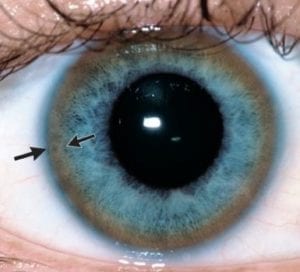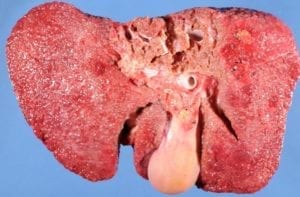Samuel Kinnier Wilson (1878-1937), one of the greatest neurologists of the first half of the twentieth century, described in 1912 under the title “progressive lenticular degeneration” what became known as “Wilson’s disease.”
Born in New Jersey to a Scottish mother and an Irish missionary Presbyterian minister, he went to Scotland for his education, graduated from the Edinburgh Medical School in 1902, and then studied in Paris with Pierre Marie and Joseph Babinski. In 1904 he came to the National Hospital for Nervous Diseases, Queen Square, where he worked his way up to consultant physician, spending his professional life with famous neurologists such as William Gowers and Hughlings Jackson.
In July 1912 Wilson received the gold medal of the University of Edinburgh for his doctoral thesis describing twelve patients, four treated by himself and eight by other physicians. All had involvement of the basal ganglia of the brain (clinical features which had actually been described earlier) but to which he added the coexistence of cirrhosis of the liver and the characteristic Kaiser-Fleischer ring in the eyes. Around 1950, the disease was shown to be caused by the accumulation of copper in various organs and later its molecular genetics were determined.
Wilson also introduced the terms extrapyramidal syndrome and extrapyramidal system, stressing the role of the basal ganglia in movement. He wrote on “the old motor system and the new,” on disorders of movement and muscle tone, on epilepsy, aphasia, apraxia, tics, and on pathologic laughing and crying. He published articles on the motility disorders in Parkinson’s disease, and their relation to lesions of the basal ganglia.
He was appointed senior neurologist at King’s College Hospital in 1928 and also established a private practice on Harley Street, where Charlie Chaplin was one of his patients. He was a legendary teacher, said to have been exceptionally stimulating and drawing students from all parts of the world. Described as a most unusual person with an almost photographic memory, he was a large, strong-minded, domineering man with a commanding presence who often clashed with his colleagues. He had an ironic and satirical sense of humor, his advice being, “Never show surprise,” “Never say the same thing twice to a patient,” “Never believe what the patient said the doctor said,” “Be decisive in your indecision,” and “Never take a meal with your patient.” Throughout his life he insisted that the disease he described should be called “Wilson’s disease” and not “hepatolenticular degeneration.” He spoke several languages, loved travelling, golf, and gardening, and had all but finished a textbook of neurology when he died of cancer in 1937.
 |
 |
 |
| Kinnier Wilson | Kayser- Fleischer ring | Cirrhosis of the liver |
GEORGE DUNEA, MD, Editor-in-Chief

Leave a Reply